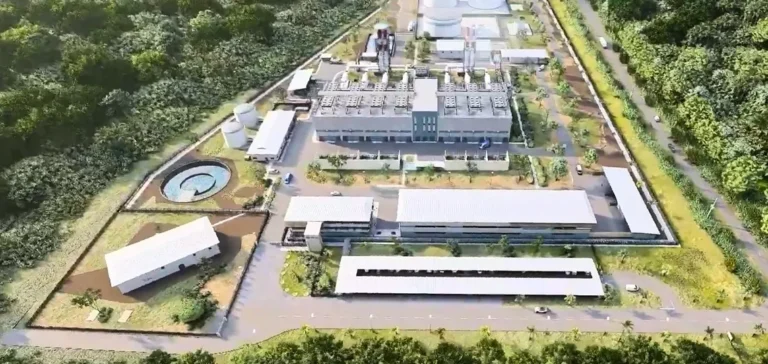French Guiana aims to transform its energy landscape by setting a goal of 100% decarbonised electricity production starting in 2027. This plan revolves around the future Larivot biomass plant, a 120-megawatt facility that will replace the old Dégrad-des-Cannes thermal plant. Powered by 100,000 tonnes of imported liquid biofuel annually, the plant represents a total investment of EUR700mn ($758mn).
Growth in renewable energy capacity
The multi-year energy programming (Programmation pluriannuelle de l’énergie, PPE) developed for French Guiana plans to increase the share of renewable energies in the power mix, already at 73% at the end of 2022. The territory relies mainly on solar, hydraulic, solid biomass and waste recovery to strengthen its autonomy. Solar capacity is expected to rise by 61 megawatts by 2033, while guaranteed solid biomass capacity will be increased by 10 megawatts. Additional investments in waste recovery and wind power are also planned, subject to approval by the competent authorities.
This strategy is intended to bring the Amazonian territory, classified as a non-interconnected zone (Zone Non Interconnectée, ZNI) to the mainland electricity grid, closer to energy autonomy by 2030, in accordance with the energy transition law for green growth. The PPE defines the needs and production means to support the strong demographic and economic growth experienced in recent years.
The central role of the Larivot plant
The Larivot biomass plant is the cornerstone of the system to secure French Guiana’s electricity supply and limit power outages. Its commissioning is scheduled for 2026, and it could account for between 15% and 35% of the energy mix by 2033, depending on the success of other renewable energy projects. According to the Territorial Collectivity of French Guiana, the site is intended primarily as a network security tool and not as the main production asset.
However, reliance on imported biofuels in the absence of a local supply chain raises questions about the model’s long-term viability. Some sector actors consider that the local renewable potential, notably solar and hydraulic, could be better exploited to reduce the use of imported bio-liquids.
Challenges balancing the energy mix
Energy planning in French Guiana has already led to the withdrawal of a 20-megawatt solar farm project near Cayenne due to the lack of additional need for dispatchable capacity. This withdrawal highlights the necessary trade-offs between developing local renewable sectors and ensuring supply security.
The PPE, jointly developed by the State and local authorities, undergoes regular consultations to adjust the territory’s energy development trajectory. The chosen directions will directly affect the share of renewables in the Guianese mix and the production share ensured by fuel-importing facilities.






















